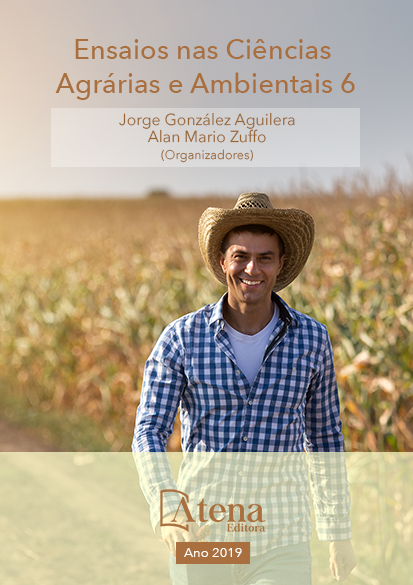
QUALIDADE DE GRÃOS DE SOJA TRANSGÊNICA RR E INTACTA RR2 PRO NA SECAGEM
O cultivo da soja expandiu-se
gradativamente, gerando um cenário otimista
ao agronegócio brasileiro, principalmente pelo
aumento da produtividade e pelas tecnologias
embarcadas nas cultivares. Entretanto, o setor
sojicultor enfrenta problemas na pós-colheita
pelo déficit de armazenamento e pelo manejo
inadequado da secagem, acarretando perda
da qualidade do produto. Objetivou-se avaliar
a qualidade de grãos de soja transgênica RR e
Intacta RR2 PRO após secagem com diferentes
temperaturas. O experimento foi realizado em
escala laboratorial, utilizando cultivares de soja
transgênica RR e Intacta RR2 PRO submetidas
à secagem nas temperaturas de 35, 45 e 55
ºC em secador experimental. A umidade foi
determinado por secagem em estufa a 105
ºC, a condutividade elétrica foi realizado pela
metodologia de VIEIRA & KRZYZANOWSKI.
Para determinação da matéria seca as amostras
foram moídas a um milímetro e colocadas
em estufa de secagem a 105 ºC durante oito
horas. O teor de proteína foi determinado pelo
método Kjeldahl, utilizando o fator de correção
de 6,25. Os teores de lipídios foi determinado
pelo Método Am5-04 da AOCS. A estatística foi
realizada pelo software Sisvar 5.6, utilizando
o teste de tukey a 5%. O teor de matéria
seca não sofreu alteração com a secagem. A
temperatura de secagem a 55 °C apresentou o
menor teor de lipídios e maior teor de proteína.
A condutividade elétrica aumentou conforme a
elevação da temperatura do ar de secagem. A
cultivar RR manteve maior teor de proteína nas
secagens a 35 e 55 °C em relação a cultivar
RR2 PRO.
QUALIDADE DE GRÃOS DE SOJA TRANSGÊNICA RR E INTACTA RR2 PRO NA SECAGEM
-
DOI: 10.22533/at.ed.42119160114
-
Palavras-chave: Proteína, lipídios, condutividade elétrica, cultivares.
-
Keywords: Protein, lipids, electrical conductivity, cultivars.
-
Abstract:
Soybean cultivation expanded
gradually, generating an optimistic scenario
for Brazilian agribusiness, mainly due to the
increase in productivity and technologies
introduced in the cultivars. However, the
soybean sector faces post-harvest problems
due to storage deficits and inadequate handling
of drying, leading to loss of product quality.
The objective of this study was to evaluate the
quality of RR and Intacta RR2 transgenic soybean grains. The experiment was carried
out on a laboratory scale using transgenic RR and Intacta RR2 PRO soybean cultivars
submitted to drying at 35, 45 and 55 ºC in an experimental dryer. The temperature was
degassed at 105 ºC, a retro conductivity was produced by VIEIRA & KRZYZANOWSKI
methodology. To obtain the filtered temperature, the samples were added to a meter
and placed in a drying oven at a temperature of 105 ° C for days. The protein content
was determined by the Kjeldahl method, using the correction factor of 6.25. Lipid
contents were established by AOCS Method Am5-04. The statistic was performed by
Sisvar software 5.6, using the tukey test at 5%. The dry material content does not
change with drying. The drying temperature at 55 ° C showed a lower lipid content and
a higher protein content. Aereodecorated increase the temperature of the drying air.
The RR cultivar had higher protein content in the drying at 35 and 55 ° C in relation to
RR2 PRO cultivar.
-
Número de páginas: 15
- Marília Boff de Oliveira


